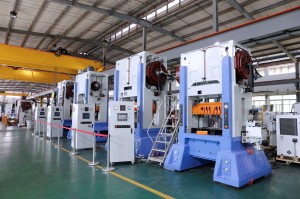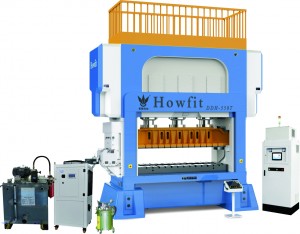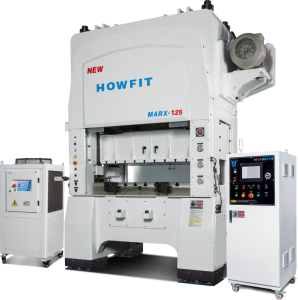Stamping is a product manufacturing process employed by many manufacturers. It forms sheet metal into various parts in a consistent manner. It provides the producer with a very specific means of controlling the production process and is widely used in various areas of industrial production due to the many options available.
This versatility means that manufacturers have a lot of knowledge about different stamping methods, so it makes perfect sense to work with an experienced material supplier. When working with metals such as aluminum or stainless steel, it is important to understand the application of the alloy in each process, and the same is true for stamping.
Two common stamping methods are progressive die stamping and transfer die stamping.
What is stamping?
Stamping is a process that involves placing a flat sheet of metal on a punch press. The starting material can be in billet or coil form. The metal is then formed into the desired shape using a stamping die. There are many different types of stamping that can be used on sheet metal, including punching, blanking, embossing, bending, flanging, perforating, and embossing.
In some cases, the stamping cycle is performed only once, which is sufficient to create the finished shape. In other cases, the stamping process may occur in several stages. The process is typically carried out on cold sheet metal using precision machined dies fabricated from high performance tool steel to ensure uniformity and reliability of the stamping process.
Simple metal forming dates back thousands of years and was originally done manually using a hammer, awl, or other such tools. With the advent of industrialization and automation, stamping processes have become more complex and diverse over time, with a variety of options to choose from.
What is progressive die stamping?
A popular type of stamping is known as progressive die stamping, which employs a series of stamping operations in a single linear process. The metal is fed using a system that pushes it forward through each station where each necessary operation is performed step by step until the part is complete. The final action is usually a trimming operation, separating the workpiece from the rest of the material. Coils are often used as raw material for progressive stamping operations, as they are typically used in high-volume production.
Progressive die stamping operations can be complex processes involving many steps before they are complete. It is critical to advance the sheet in a precise manner, usually within a few thousandths of an inch. Tapered guides have been added to the machine and they combine with the holes previously punched in the sheet metal to ensure proper alignment during feeding.
The more stations involved, the more expensive and time-consuming the process; for economic reasons it is recommended to design as few progressive dies as possible. It is important to note that when the features are close together there may not be enough clearance for the punch. Also, problems arise when the cutouts and protrusions are too narrow. Most of these issues are addressed and compensated for by using CAD (Computer Aided Design) software in part and mold design.
Examples of applications using progressive dies include beverage can ends, sporting goods, automotive body components, aerospace components, consumer electronics, food packaging, and more.
What is Transfer Die Stamping?
Transfer die stamping is similar to progressive die stamping, except that the workpiece is physically transferred from one station to the next rather than continuously advanced. This is the recommended method for complex pressing operations involving multiple complex steps. Automatic transfer systems are used to move parts between workstations and hold assemblies in place during operation.
The job of each mold is to shape the part in a specific way until it reaches its final dimensions. Multi-station punch presses allow one machine to operate multiple tools at the same time. In fact, every time the press is turned off as the workpiece passes through it, it involves all the tools acting simultaneously. With modern automation, multi-station presses can now perform operations that previously might have involved several different operations in one press.
Due to their complexity, transfer punches typically run slower than progressive die systems. However, for complex parts, including all steps in one process can speed up the overall production process.
Transfer die stamping systems are typically used for larger parts than are suitable for the progressive die stamping process, including frames, shells and structural components. It typically occurs in industries that employ progressive die stamping techniques.
How to choose the two processes
Choosing between the two usually depends on the specific application. Factors that must be considered include the complexity, size and number of parts involved. Progressive die stamping is ideal when processing large numbers of small parts in a short amount of time. The larger and more complex parts involved, the more likely transfer die stamping will be required. Progressive die stamping is fast and economical, while transfer die stamping offers greater versatility and variety.
There are a few other disadvantages of progressive die stamping that manufacturers need to be aware of. Progressive die stamping typically requires more raw material input. Tools are also more expensive. They also cannot be used to perform operations that require parts to leave the process. This means that for some operations, such as crimping, necking, flange crimping, thread rolling or rotary stamping, a better option is stamping with a transfer die.
Post time: Aug-25-2023



